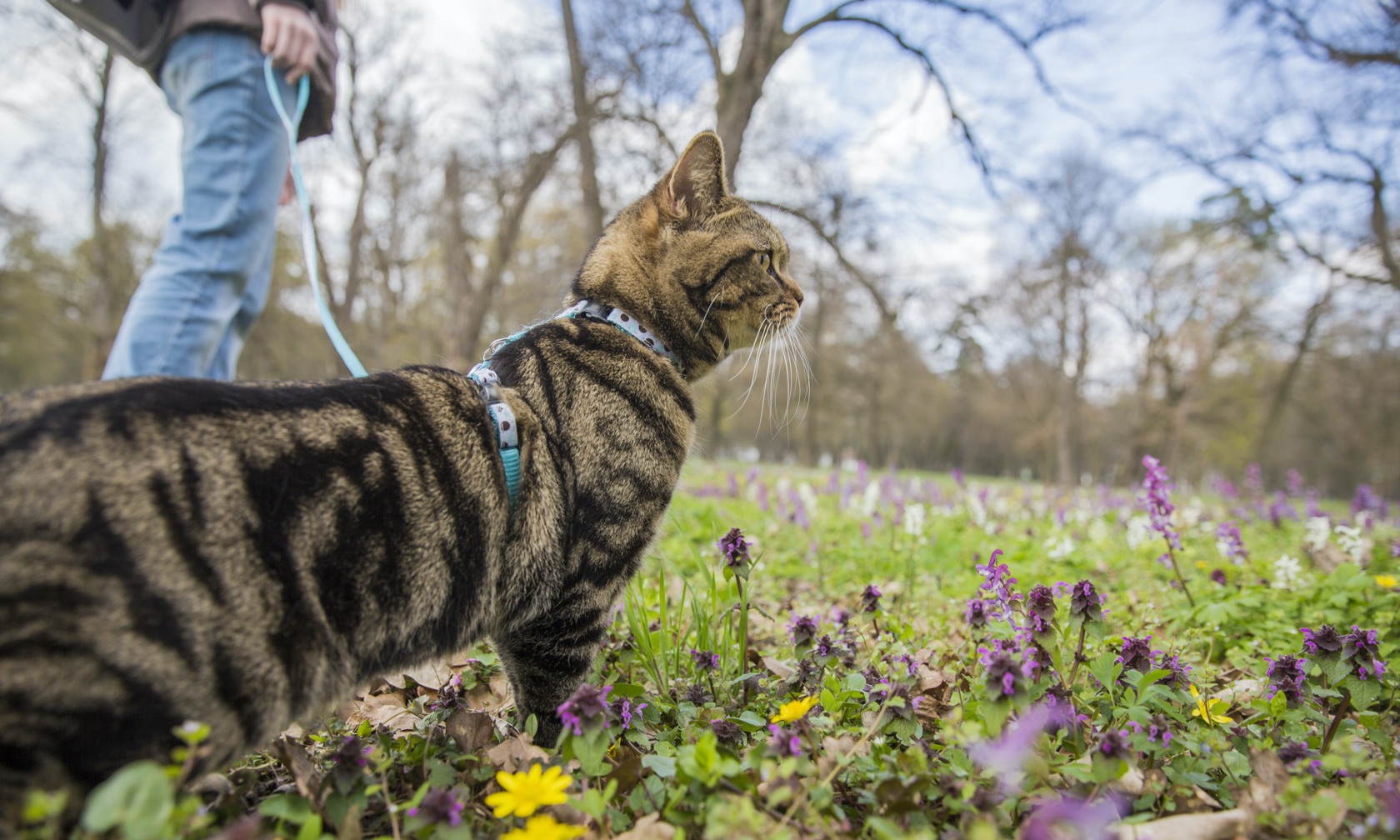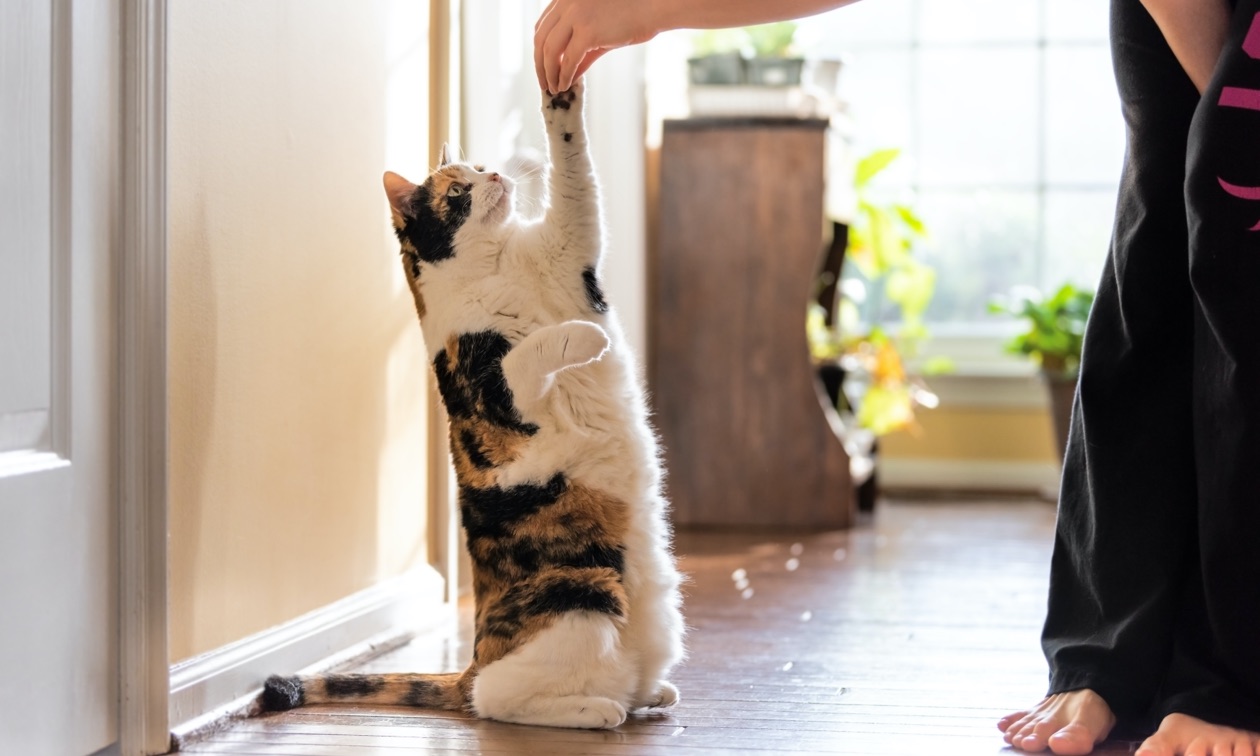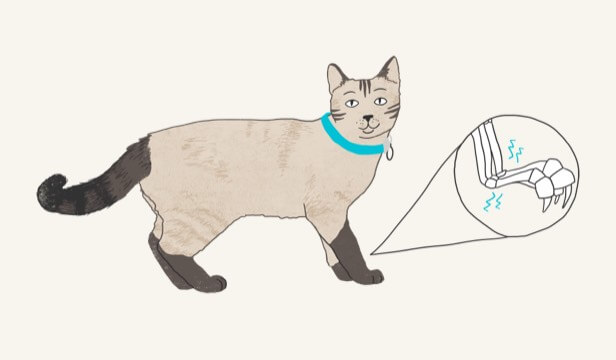Have you ever wondered why you don’t see more people walking their cats? Contrary to what many believe, cats can actually enjoy walking on a leash — dogs don’t get to have all the fun! Even though this can be a fun activity, care must be taken so your cat does not run away or get harmed while outside — it's not as simple as leash walking a dog. However, with the right training (and treats) you can teach your cat to walk on-leash and enjoy the great outdoors with you!
Which Cats Make Great Walking Companions?
Not all cats will like walking outside on a leash, but many love it. While you can teach a more (ahem) mature cat new tricks, training a younger cat can be a lot easier. These are the types of cats that make great walking companions:
- Adventurous
This cat loves to explore new areas of your home and spends hours entertained by staring out the windows. - Socialized
This cat is quick to greet visitors to your home and eager to lay in anyone’s lap. - Active
This cat loves to move. The house is their playground. - Overweight
This cat needs to shed a few pounds and needs some encouragement to move. Make sure to work with your vet before walking an overweight cat to address problems like possible arthritis or other conditions that could make these walks uncomfortable for them.
Why Should You Walk Your Cat?
You might consider walking your cat for a number of reasons. If your cat seems bored indoors, walks can provide mental stimulation that can be difficult to duplicate in your home. Walks also allow your cat to get exercise, which helps them stay at a healthy weight. When cats go on a walk, they’re getting the benefits of being an outdoor cat without the dangers associated with it. Walking with your cat also helps to strengthen the relationship you two have — and just think of all the heads you’ll turn on a walk through your neighborhood!

How to Walk Your Cat
Before you head out on a walk with your cat, you’ll need to put in some work to get them ready for their excursion. This begins with having the proper gear to enjoy the walk. You’ll need:
- A Harness
Choose one that distributes pressure evenly to take pressure off their neck and fits properly to prevent them from slipping out and running away. - A Leash
A fixed-length leash helps keep your cat close — ideally a length of 4 to 6 feet works best. Make sure the leash is cat-friendly; not heavy, but not easily chewed through. - Treats and Treat Bag
Reward your cat during training and walks.
Start Slow
Introduce the harness and leash to your cat by allowing them to smell the items (and give a treat when they go near it). You can also try spritzing the harness with a cat-calming pheromone. Both can help your cat form a positive association with the walking gear. Once your cat is comfortable around it, begin to introduce them to wearing the harness. Be sure to reward often with treats!
Once the harness is an accessory your cat is willing to wear, try walking around your home with them on the leash. Once they’re confident and seem to be enjoying it, you can transition to walking outside. Start off by walking in an area with fewer people before venturing too far to ensure your cat is enjoying it.
Keep Your Cat Safe on Walks
Be observant of your neighborhood. Do you live in the country, suburbs, or the city? Take a few walkabouts without your kitty to plan your excursions. Look for traffic: pedestrian, bicycle, and motor. See if you encounter any dogs. Are they on leash, or off leash? Big or small? These things might direct the route you take, the time of day, or the neighborhood you walk in. If you meet pooch parents, take a minute to introduce yourself and let them know your plan. If you’re in the city, look for ways to quickly change your route if you need to, or maybe a doorway or staircase you could step into if you are in a bind. A startled frightened feline can become difficult to handle.
Consider starting your new cat walking routine with a human friend for moral and logistical support. Bring a large soft towel for your first few walks in case you need to scoop up your cat in a hurry. As a last resort, you may have to use a pet-safe dog deterrent spray. Ultimately this is to protect both your cat and the dog, as an altercation may NOT go well, even if your cat is friendly around dogs.
It’s also important to make sure your cat is protected from the fleas, ticks, intestinal worms, and mosquitoes that are a threat. Ensure your cat is on a parasite protection medication year-round.
Lastly, ensure your cat is wearing identification and is microchipped prior to heading outdoors to help them find their way home if they should cut loose and run away.
You’re now ready to hit the town with your feline companion! Enjoy exploring the great outdoors and turning heads when walking the catwalk.
ZPC-00234R3





